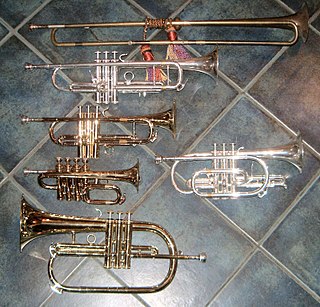 W
WPitch is a perceptual property of sounds that allows their ordering on a frequency-related scale, or more commonly, pitch is the quality that makes it possible to judge sounds as "higher" and "lower" in the sense associated with musical melodies. Pitch can be determined only in sounds that have a frequency that is clear and stable enough to distinguish from noise. Pitch is a major auditory attribute of musical tones, along with duration, loudness, and timbre.
 W
WAmbitus is a Latin term literally meaning "the going round", and in Medieval Latin means the "course" of a melodic line, most usually referring to the range of scale degrees attributed to a given mode, particularly in Gregorian chant. It may also refer to the range of a voice, instrument, or piece generally. In Gregorian chant specifically, the ambitus is the range, or the distance between the highest and lowest note. Different chants vary widely in their ambitus. Even relatively florid chants like Alleluias may have a narrow ambitus. Earlier writers termed the modal ambitus "perfect" when it was a ninth or tenth, but from the late fifteenth century onward "perfect ambitus" usually meant one octave, and the ambitus was called "imperfect" when it was less, and "pluperfect" when it was more than an octave.
 W
WThe pitch of a brass instrument corresponds to the lowest playable resonance frequency of the open instrument. The combined resonances resemble a harmonic series. The fundamental frequency of the harmonic series can be varied by adjusting the length of the tubing using the instrument's valve, slide, key or crook system, while the player's embouchure, lip tension and air flow serve to select a specific harmonic from the available series for playing. The fundamental is actually missing from the resonances and is impractical to play on some brass instruments, but the overtones account for most pitches.
 W
WConcert pitch is the pitch reference to which a group of musical instruments are tuned for a performance. Concert pitch may vary from ensemble to ensemble, and has varied widely over music history. The most common modern tuning standard uses 440 Hz for A above middle C as a reference note, with other notes being set relative to it. In the literature this is also called international standard pitch.
 W
WHelmholtz pitch notation is a system for naming musical notes of the Western chromatic scale. Fully described and normalized by the German scientist Hermann von Helmholtz, it uses a combination of upper and lower case letters, and the sub- and super-prime symbols to denote each individual note of the scale. It is one of two formal systems for naming notes in a particular octave, the other being scientific pitch notation.
 W
WTraditionally in Western music, a musical tone is a steady periodic sound. A musical tone is characterized by its duration, pitch, intensity, and timbre. The notes used in music can be more complex than musical tones, as they may include aperiodic aspects, such as attack transients, vibrato, and envelope modulation.
 W
WOtonality and utonality are terms introduced by Harry Partch to describe chords whose pitch classes are the harmonics or subharmonics of a given fixed tone (identity), respectively. For example: 1/1, 2/1, 3/1,... or 1/1, 1/2, 1/3,....An Otonality is that set of pitches generated by the numerical factors (...identities)...over a numerical constant in the denominator. Conversely, a Utonality is the inversion of an Otonality, a set of pitches with a numerical constant in the numerator over the numerical factors...in the denominator.
 W
WIn music, a pitch class (p.c. or pc) is a set of all pitches that are a whole number of octaves apart, e.g., the pitch class C consists of the Cs in all octaves. "The pitch class C stands for all possible Cs, in whatever octave position." Important to musical set theory, a pitch class is "all pitches related to each other by octave, enharmonic equivalence, or both." Thus, using scientific pitch notation, the pitch class "C" is the set{Cn : n is an integer} = {..., C−2, C−1, C0, C1, C2, C3 ...}.
 W
WIn music, the range, or chromatic range, of a musical instrument is the distance from the lowest to the highest pitch it can play. For a singing voice, the equivalent is vocal range. The range of a musical part is the distance between its lowest and highest note.
 W
WThe Savart wheel is an acoustical device named after the French physicist Félix Savart (1791–1841), which was originally conceived and developed by the English scientist Robert Hooke (1635–1703).
 W
WScientific pitch notation is a method of specifying musical pitch by combining a musical note name and a number identifying the pitch's octave.
 W
WSub-bass sounds are the deep, low- register pitched pitches approximately below 60 Hz (C2 in scientific pitch notation) and extending downward to include the lowest frequency humans can hear, assumed at about 20 Hz (E0). In this range, human hearing is not very sensitive, so sounds in this range tend to be felt more than heard. The low E-string on a bass guitar is usually tuned to 41.2 Hz, while the lowest note on a piano is A, at 27.5 Hz. Sound reinforcement systems and PA systems often use one or more subwoofer loudspeaker cabinets that are specifically designed for amplifying sounds in the sub-bass range. Sounds below sub-bass are called infrasound.